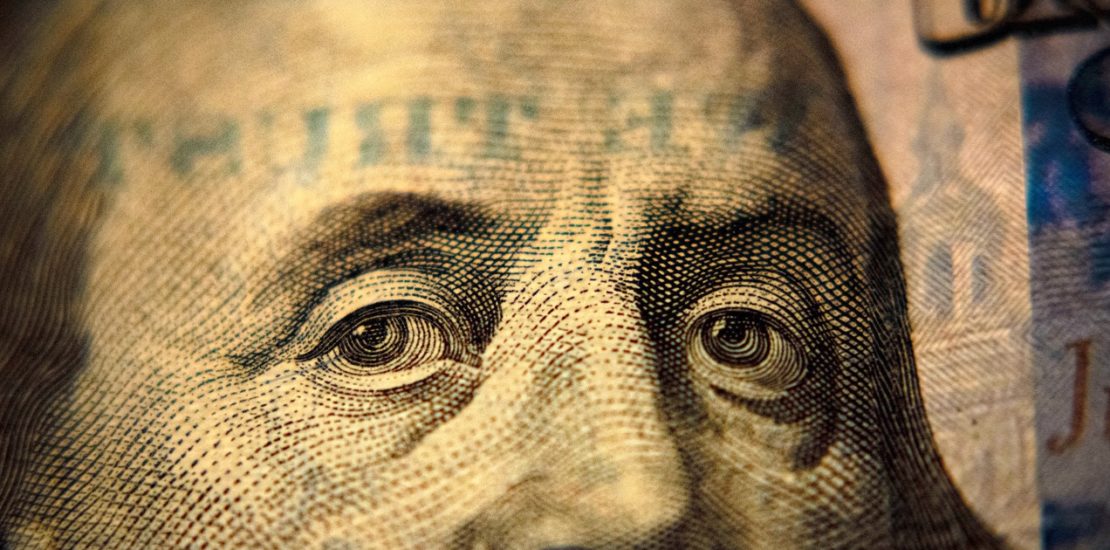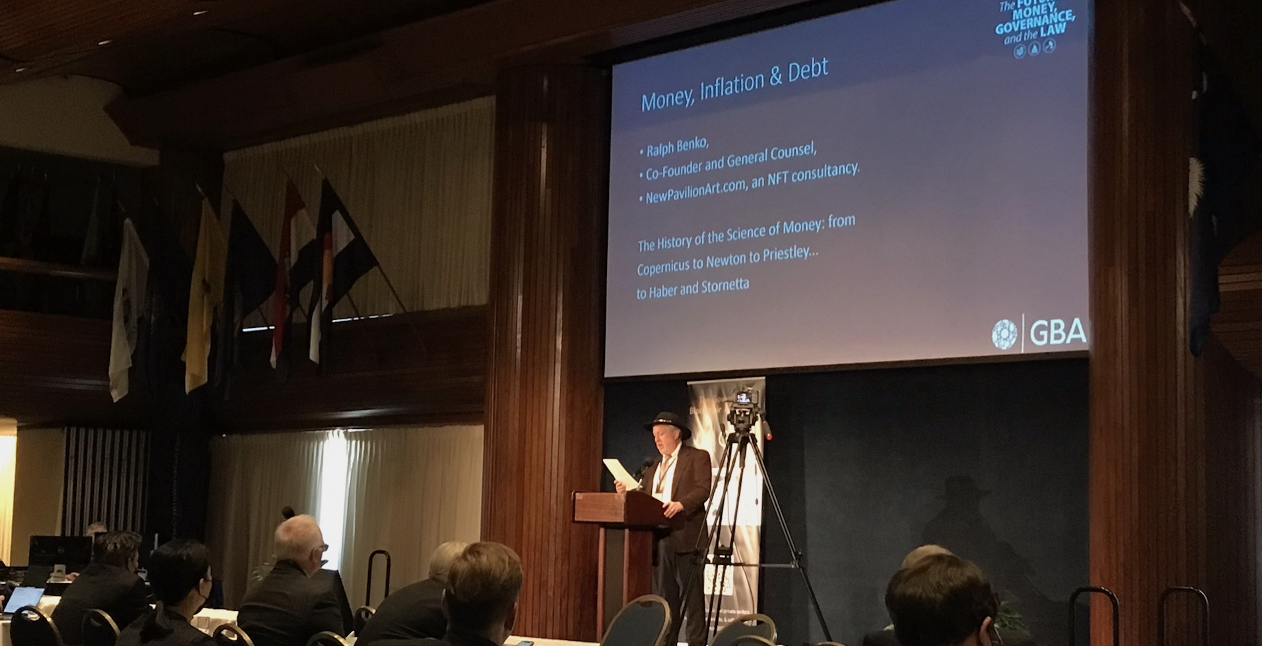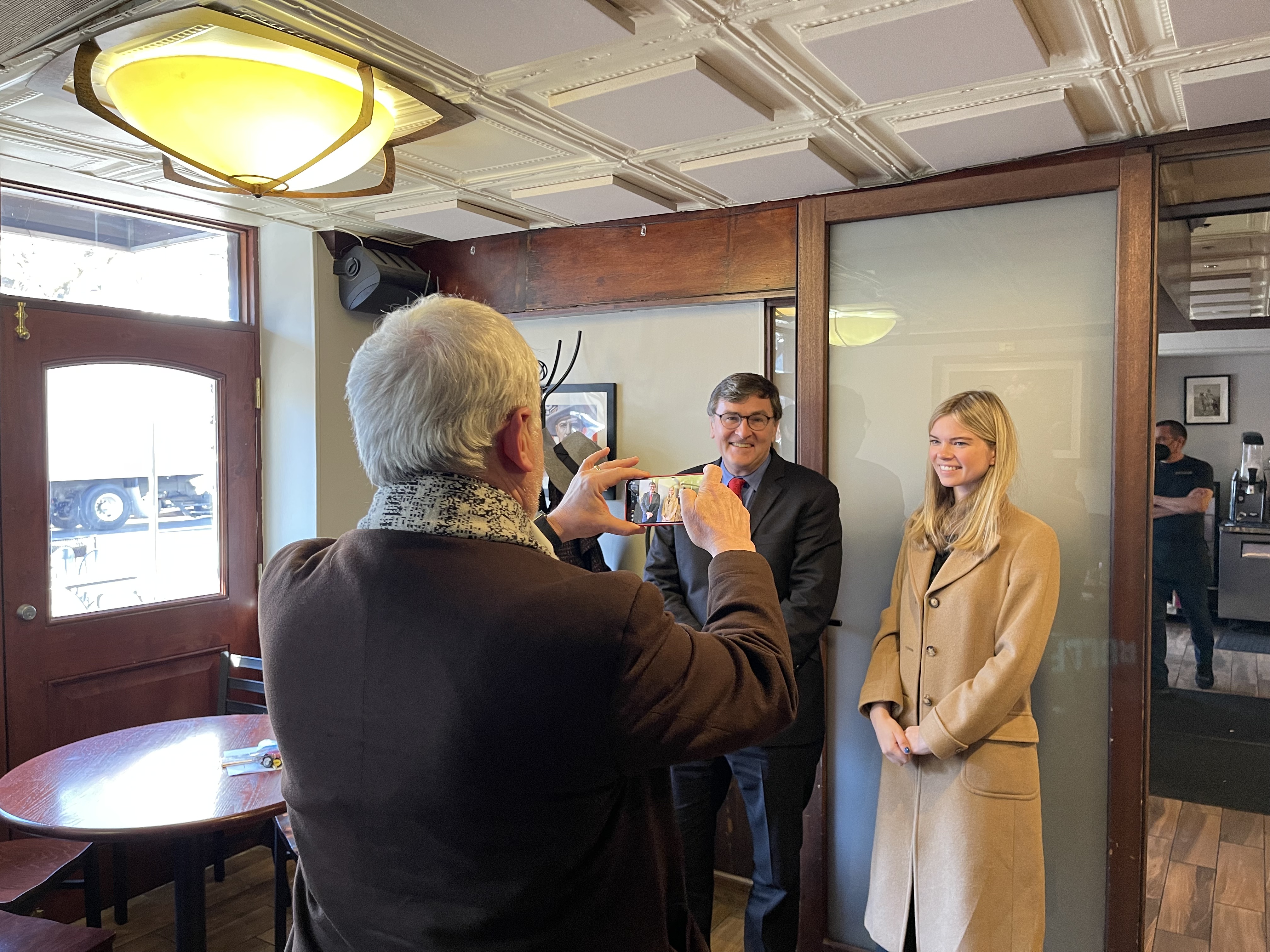- February 11, 2022
- Posted by: MasterAdmin
- Category: Cryptocurrency

\ ==“[T]he study of monetary questions is one of the great causes of insanity.”== – U.S. Senator and National Monetary Commission chairman Nelson Aldrich.
\
Introduction Money
\ Money is a technology designed to facilitate commerce and investment. Money was primarily developed by scientists, not economists, although first definitively defined by that great economist William Stanley Jevons.
\
Economists study money. Scientists defined and engineered it.
\ When the notorious Scottish economist John Law meddled in French monetary policy, he infamously muddled it, destroying France financially.
\
What is Money?
\ Wikipedia summarizes the consensus well:
\ “In Money and the Mechanism of Exchange (1875), William Stanley Jevons famously analyzed money in terms of four functions: a medium of exchange, a common measure of value (or unit of account), a standard of value (or standard of deferred payment), and a store of value. By 1919, Jevons’s four functions of money were summarized in the couplet:
\
Money’s a matter of functions four,
A Medium, a Measure, a Standard, a Store.
\ “This couplet would later become widely popular in macroeconomics textbooks. Most modern textbooks now list only three functions, that of the medium of exchange, unit of account, and store of value.”
\ Not for nothing did U.S. Senator Nelson Aldrich — while reporting, in 1909, on the observations of his National Monetary Commission, in a speech before the Economic Club of New York– archly quote McLeod to the effect that:
\
“the study of monetary questions is one of the great causes of insanity.”
\ This was almost certainly a swipe at free silver demagogue and presidential candidate William Jennings “You shall not crucify mankind upon a cross of gold” Bryan.
\ Yet perhaps Sen. Aldrich was prophesying my good friends, Gerard Daché, the founder and executive director of the Government Blockchain Association and Professor Jim Liew, of Johns Hopkins University. And me….
\ Not so incidentally, let us recall quantum physicist Niels Bohr’s comment to Wolfgang Pauli:
==“We are all agreed that your theory is crazy. The question that divides us is whether it is crazy enough to have a chance of being correct.”==
As it happens, money has a sterling scientific provenance.
\  Ralph Benko addressing a gathering of the Government Blockchain Association January 27, 2022, National Press Club, Washington, DC. Photo by Jim Liew
Ralph Benko addressing a gathering of the Government Blockchain Association January 27, 2022, National Press Club, Washington, DC. Photo by Jim Liew
\
Money’s Provenance Copernicus
\ Money’s modern scientific provenance goes back at least to Nicholas Copernicus, the very same savant who persuaded the Earth to orbit the Sun instead of the Sun orbiting the Earth as previously believed.
\ In 1526, yes, nearly 500 years ago, Copernicus wrote a brilliant treatise On the Minting of Money. It was my arcane privilege to serve as the lead co-editor of what may be its most esteemed modern translation.
\ Copernicus warned:
\ “ALTHOUGH THERE ARE COUNTLESS MALADIES that are forever causing the decline of kingdoms, princedoms, and republics, the following four (in my judgment) are the most serious: civil discord, a high death rate, sterility of the soil, and the debasement of the coinage. The first three are so obvious that everybody recognizes the damage they cause; but the fourth one, which has to do with money, is noticed by only a few very thoughtful people, since it does not operate all at once and at a single blow, ==but gradually overthrows governments and in a hidden, insidious way.”==
\ He went on to observe:
\ “Money, or ‘coinage,’ is gold or silver that has been specially marked — in accordance with policy established by any government or head of government — for the purpose of reckoning the prices of things that are bought and sold.
\ “Money is therefore a kind of common “measuring stick” for the valuation of things. Now, whatever is taken as a measure has to be stable — must keep to a fixed limit. Otherwise, public order will necessarily be disturbed, and the buyers and sellers of things will be cheated many times over, just as if basic measures of length [Latin ulna, or ell], bulk measure [Latin modius, or peck], or weight did not have a fixed quantity.
\ “Now, I think that the relevant measure here is the valuation [Latin aestimatio] of the money as such, and, although this is founded in the quality of the metal it is made of, nevertheless, money’s material or metallic value [Latin valor] must be distinguished from its valuation as money [aestimatio]; for money can be valued more in itself than the material it is composed of and vice versa [i.e., its material value may be more than its actual valuation].
\ “It is necessary for money to be established: even though exchange could also take place simply by weights of gold or silver alone (since, by universal human consent, gold and silver are everywhere highly valued).
\
“Nevertheless, money is needed for two reasons: first, because of the inconvenience of always having to carry around heavy weights of metal, and second, because the real value of the metals is not easily grasped by everyone at a glance. Thus it has become customary to mark money with a public seal, by means of which the proper amount of gold or silver is indicated as present in each coin, and that the public authority is to be trusted in this.
…
\ “The [material] value of money is lessened in many ways: either through defect of material alone, namely, when more bronze is mixed with silver than is right for that particular weight of coin; or through the loss of [total] weight of the coin, even though the proportion of bronze to silver is correct; or (and this is the worst case) through both of these defects occurring at the same time; finally, the value can just diminish on its own through usage, over a long passage of time, and this is the only reason for making new money.
\ “The evidence of this happening is, if the silver in the money is found to be significantly less than what can be bought with it — and this is rightly considered debasement [or poverty: Latin penuria] of the currency.”
\ The Prussian nobles who Copernicus was addressing did not heed his wise advice. They eventually suffered the fate he predicted.
\
Newton
\ In addition to observing an apple’s fall and founding modern physics, Sir Isaac Newton served, professionally, as the Master of the Royal Mint of Great Britain in at the end of the 17th and beginning of the 18th century.
\ Per the Royal Mint itself:
\ “When Sir Isaac Newton came to the Royal Mint Britain’s finances were approaching crisis, with up to one in ten circulating coins believed to be forged. His vision of matchless quality led him to root out and prosecute notorious counterfeiters, improve assaying techniques (the way coin quality is checked), and refine weights and measures to standards never seen before.
\ “In 1699 Newton became Master of the Mint. After overseeing the new coinage for the accession of Queen Anne in 1702 he also supervised the huge task of bringing Scottish coinage into line with English coinage, following the Union of England and Scotland in 1707. Thanks to Newton’s vision, Royal Mint coins remain unrivaled in their accuracy and purity to this day.”
\ How great a figure was Newton?
\ Just for a moment, consider the last words of the first celebrity economist, John Maynard Keynes, delivered posthumously by his brother, Geoffrey, singing the praises of Newton in the 1940’s.
\n ”Newton was not the first of the age of reason. He was the last of the magicians, the last of the Babylonians and Sumerians, the last great mind which looked out on the visible and intellectual world with the same eyes as those who began to build our intellectual inheritance rather less than 10,000 years ago. Isaac Newton, a posthumous child born with no father on Christmas Day, 1642, was the last wonderchild to whom the Magi could do sincere and appropriate homage.”
\ And per Christianity Today:
\ “Even in Newton’s lifetime, his contemporaries’ adulation verged on worship. Following his death in April 1727, Newton lay in state in Westminster Abbey for a week. At the funeral, his pall was borne by three earls, two dukes, and the Lord Chancellor. Voltaire observed, “He was buried like a king who had done well by his subjects.”
\ “No scientist before or since has been so revered and interred with such high honor.
\ “Who was this man whose stature has dominated the scientific landscape for three centuries? Why did his achievements have such an impact on society? What role did Newton’s faith play in his life and work?
…
\ “For Newton the world of science was by no means the whole of life. He spent more time on theology than on science; indeed, he wrote about 1.3 million words on biblical subjects. Yet this vast legacy lay hidden from public view for two centuries until the auction of his nonscientific writings in 1936.
\ “Newton’s understanding of God came primarily from the Bible, which he studied for days and weeks at a time. He took a special interest in miracles and prophecy, calculating dates of Old Testament books and analyzing their texts to discover their authorship. In a manuscript on rules for interpreting prophecy, Newton noted the similar goals of the scientist and the prophecy expositor: simplicity and unity.”
\ Although the Sermon on the Mountain contains an aphorism holding that you cannot serve both God and money, Newton proves a clear exception to that rule.
\
What was Newton’s Monetary Legacy?
\ A happy accident by Newton led to the gold standard, a monetary system which helped Great Britain prosper, proving instrumental in Britain’s becoming a dominant world power. Wikipedia:
\n ”Great Britain accidentally adopted a de facto gold standard in 1717 when SirIsaac Newton, then-master of the Royal Mint, set the exchange rate of silver to gold too low, thus causing silver coins to go out of circulation.
\ “A formal gold specie standard was first established in 1821, when Britain adopted it following the introduction of the gold sovereign by the new Royal Mint at Tower Hill in 1816.
\ “As Great Britain became the world’s leading financial and commercial power in the 19th century, other states increasingly adopted Britain’s monetary system.
…
\ “The gold specie standard came to an end in the United Kingdom and the rest of the British Empire with the outbreak of World War I.”
\ Contemporaneously with Newton, John Law, a Scottish economist, introduced a paper money standard (what some today call “fiat”) in France. This led to a speculative bubble, horrendous inflation, and both France’s and Law’s financial ruin.
\ Per Wikipedia:
\ “[Law] served as Controller General of Finances under the Duke of Orleans, who was regent for the juvenile Louis XV of France. In 1716, Law set up a private Banque Générale in France. A year later it was nationalized at his request and renamed as Banque Royale. …
\ “Law also set up and directed the Mississippi Company, funded by the Banque Royale. Its chaotic collapse has been compared to the 17th-century tulip mania in Holland.[3] The Mississippi bubble coincided with the South Sea bubble in England, which allegedly took ideas from it. Law as a gambler would win card games by mentally calculating odds…. The term “millionaire” was coined for beneficiaries of Law’s scheme.
\ …
\ “Speculation gave way to panic as people flooded the market with future shares trading as high as 15,000 livres per share, while the shares themselves remained at 10,000 livres each.
\ “By May 1720, prices fell to 4,000 livres per share, a 73 per cent decrease within a year. The rush to convert paper money to coins led to sporadic bank hours and riots…
\ The descent of a relatively unknown man came as fast as his rise, leaving an economic power vacuum. Law’s theories live on 300 years later and ‘captured many key conceptual points which are very much a part of modern monetary theorizing.’”
\
Priestley
\ Fast forward again, now toward the mid-to-late 1700s. One of the first great chemists, Joseph Priestley, the discoverer of oxygen and the inventor of carbonation (an invention upon which our soft-drink industry is based) wrote extensively and eruditely on the gold standard, providing an extensive lecture on the mechanics of money later published in his Lectures on History and General Philosophy (1793).
\ Per Wikipedia:
\ “Lectures on History and General Policy (1788) is the published version of a set of lectures on history and government given by the 18th-century British polymath Joseph Priestley to the students of Warrington Academy.
\ “The Lectures cover an array of topics—”forms of government, the feudal system, the rise of corporations, law, agriculture, commerce, the arts, finance and taxation, colonies, manners, population, war and peace”—demonstrating how all-encompassing Priestley believed the study of history to be.
\ “Priestley offers a version of history in which all events are ‘an exhibition of the ways of God.’ Studying history and nature, according to Priestley, ‘leads us to the knowledge of his perfections and of his will.’ Understanding history thus allows one to comprehend the natural laws God established and the perfection towards which they allow the world to tend. This millennial outlook is tied together with Priestley’s belief in scientific progress and the improvement of the human race.’”
Stornetta and Haber

The author taking a snapshot of Dr. Stornetta and Congressional and blockchain thought leaders Lizzy Fallon, Capitol Hill, January 10, 2022. Photo by Jim Liew.
\ Fast forward yet again, to the late 20th century.
\ In 1991, Dr. W. Scott Stornetta, together with Dr. Stuart Haber, published How to Time-Stamp a Digital Document. This was the breakthrough that is the blockchain, cited three times (out of eight citations) in Satoshi’s white paper.
\ Per Coingeek,
\ “Working at Bellcore Labs in the 1990s, scientists Stuart Haber and Scott Stornetta were allowed to pick their own research projects. For Scott, a problem worth solving was the authentication of digital documents: how could you be sure the version you were looking at had not been altered from its original?
\ The two worked as a team and were on the point of proving to themselves that the question of trust made the problem insoluble: there always needed to be some independent person or body to verify authenticity—but what if they were also part of a collusion? But then, Scott says, as he was waiting to go into a restaurant (author’s note, as he told me, a Friendly’s) with his family, he had a brainwave.
\ If you needed to keep adding extra trusted parties to vouch for the honesty of the existing players, then, logically, the list would expand infinitely until the whole world was required. And that still wouldn’t be enough. Scott’s insight was, as he explains it, ‘I realised that if you turn that upside down and created a system of interlinked documents with essentially everyone as a witness, then you had, in fact, solved the problem.’”
\ Behold the seed of cryptocurrency, the money of the future.
Conclusion
And there you have a potted history of the scientists who invented money as we knew it and know it today: Copernicus, Newton, Priestley.
\ And the secret origin story of future money by scientists: Stornetta and Haber.
\ I have treated you the scientific provenance of the key makers of money, with brief detours to the distinguished monetary economist Jevons, a passing reference to the first celebrity economist, John Maynard Keynes, and a revelation of the notorious economist John Law, proponent of promiscuously issued paper money with its attendant catastrophic debasement and attendant panic.
\ And here we are today at the Government Blockchain Association’s ==Future of Money, Governance and the Law==.
\ Contemplating the contributions of five distinguished scientists, coupled with brief forays to three influential economists, gives us insight into the potential future of money, governance and the law.
What possibilities for greater prosperity, equity and financial stability does the blockchain create?
\ So glad you asked.
\ Let us reprise the view of the great discoverer of oxygen who offers: “A version of history in which all events are “an exhibition of the ways of God;” studying history and nature, according to Priestley, to lead “us to the knowledge of [God’s] perfections and of [God’s] will.”
\ Let us reprise the quest of the great Newton, who sought, both as to prophecy and science, simplicity and unity.
\ What possibilities does the blockchain create?
\ Welcome.
\ You’ve come to the right place.
\
\ Adapted from remarks presented at the Government Blockchain Association’s The Future of Money, Governance and the Law, the National Press Club January 27, 2022.
\ Dedicated to Ellen Stevens, editor extraordinaire.



